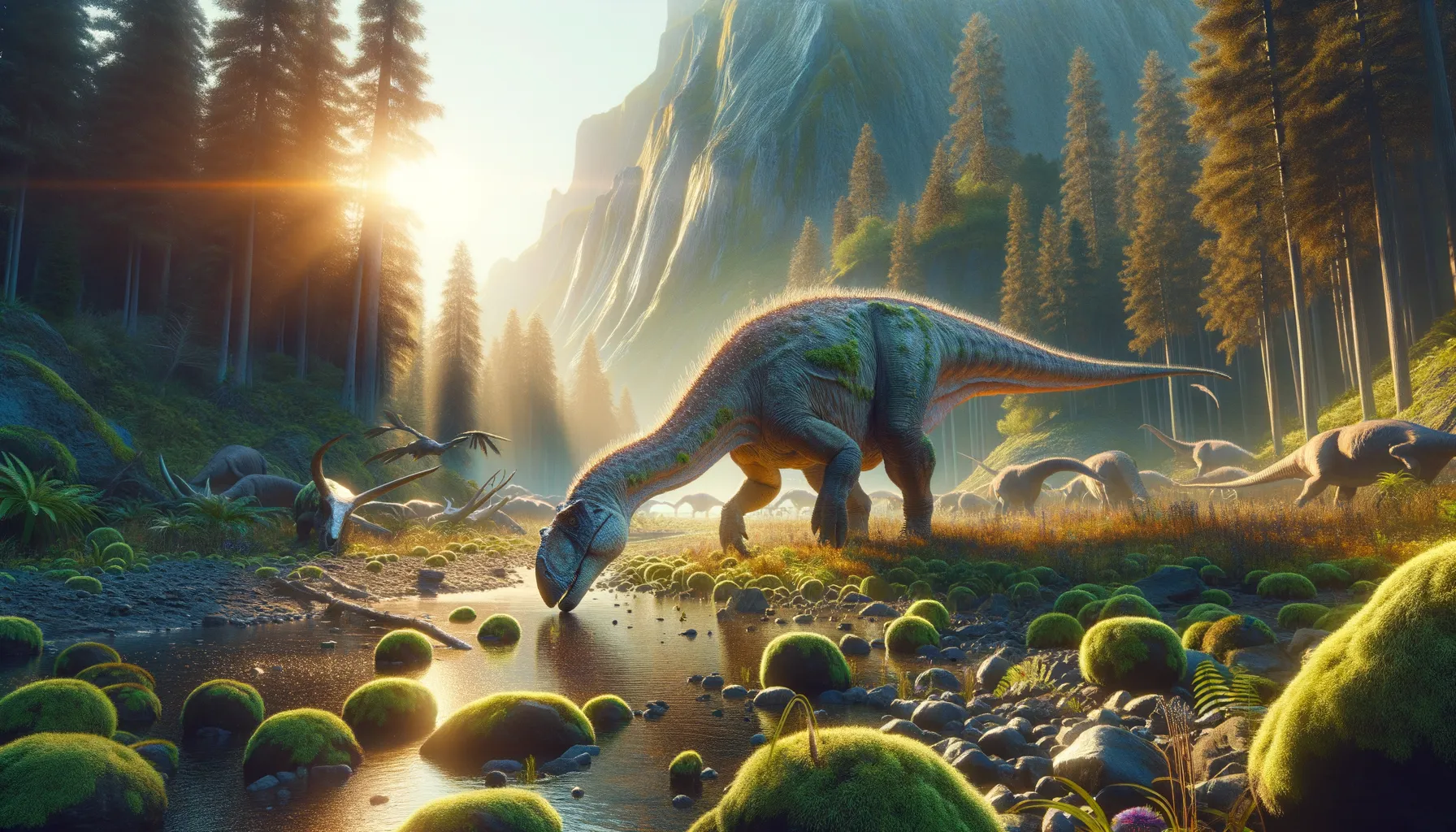
Augustynolophus
Cretaceous giant with a duck-billed charm.
Period
Cretaceous
Length
Measured around 9 meters long.
Height
Stood approximately 3 meters tall at the hips.
Weight
Weighed up to 3 tons.
Augustynolophus was a large plant-eating dinosaur that roamed the Late Cretaceous landscapes of what is now North America. As a member of the hadrosaurid family, it had a flat, duck-billed snout, which it used to graze on a variety of vegetation. Known from fossil finds primarily in California, this dinosaur played a significant role in its ecosystem, potentially traveling in herds for protection and social interaction.
Diet
Augustynolophus was a herbivore, primarily feeding on plants. Its specialized teeth helped it process tough vegetation efficiently.
Hunting
Being a herbivore, Augustynolophus did not hunt for food. Instead, it likely foraged for seeds, leaves, and other plant matter.
Environmental challenges
Living in the Late Cretaceous, Augustynolophus faced challenges such as climatic shifts and competition for resources. Predation from large theropods was also a constant threat. These dinosaurs had to adapt to changing environments with varying plant availability.
Speed
Likely moved at a moderate pace similar to other hadrosaurs.
Lifespan
Estimated to have lived around 20-30 years.
First discovery
First discovered in California, USA in the 1940s.
Fun Facts
- Augustynolophus is known as a 'duck-billed' dinosaur due to its flat, wide snout that resembles a duck's bill.
- It lived during the late Cretaceous period, about 66 million years ago, when dinosaurs were at their peak.
- Fossils of Augustynolophus have been found primarily in California, making it an important part of the state's prehistoric past.
- This dinosaur belonged to the group Hadrosauridae, which are known for their herbivorous diet and ability to chew plants efficiently.
- Augustynolophus had a large, sturdy body that helped it move on both two and four legs when needed.
- In 2017, Augustynolophus was named California's official state dinosaur, highlighting its significance in the region's natural history.
- The name Augustynolophus honors a donor family, Augustyn, with the suffix '-lophus' referring to the ridged structure on its back teeth.
Growth and Development
Augustynolophus hatched from eggs and grew rapidly in its early years. Juveniles likely stayed in groups for protection, learning to graze and travel within the safety of the herd.
Habitat
Augustynolophus lived in coastal and floodplain environments, with abundant plant life providing sustenance. The area that is now California offered lush vegetation, supporting its herbivorous diet. Seasonal changes in these habitats may have influenced its migratory patterns.
Interaction with other species
Augustynolophus shared its ecosystem with various other dinosaurs, mammals, and reptiles. It likely coexisted with other herbivores, possibly competing for the same food sources. This dinosaur had to be vigilant against large carnivorous predators.
Natural lifespan
Its natural lifespan was likely around 20-30 years.
Reproduction
Reproduction involved laying eggs in nests constructed on the ground. These nests possibly had some form of parental care, with adults protecting the eggs and hatchlings. Seasonal nesting patterns might have corresponded with favorable environmental conditions.
Social behaviour
Augustynolophus likely exhibited herd behavior, which would have provided safety in numbers from predators. Communication within the herd may have involved vocalizations and visual signals. This social structure was crucial for learning and protection, especially for younger dinosaurs.
Fossil locations
Fossils of Augustynolophus have been discovered primarily in California, USA, highlighting its presence in North America. These fossilized remains have provided valuable insights into its anatomy and lifestyle during the Late Cretaceous period.
